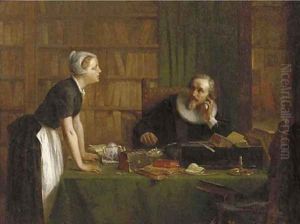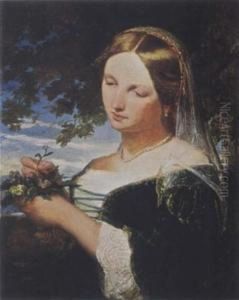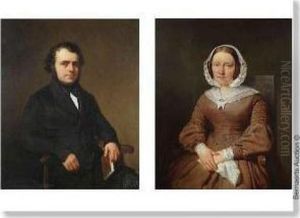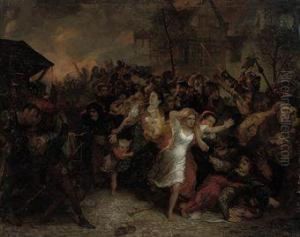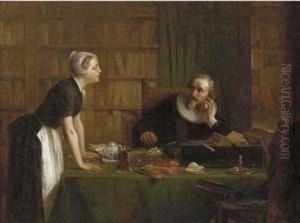Johan Bernard Wittkamp Paintings
Johan Bernard Wittkamp was a Dutch artist known for his paintings, which often depicted historical, religious, and genre scenes. Born on March 13, 1820, in Maastricht, Netherlands, Wittkamp developed his artistic skills from a young age. He moved to Amsterdam to pursue his artistic education, studying under the guidance of Jan Adam Kruseman, a prominent portraitist of the time.
Wittkamp's style was influenced by the Romantic movement, characterized by a focus on emotion, nature, and attention to detail. He was particularly skilled in capturing the nuances of light and shadow, which added a dramatic effect to his works. Throughout his career, Wittkamp produced a variety of works, including portraits, but he is particularly noted for his historical and biblical scenes, which were popular among the Dutch bourgeoisie.
In addition to his painting, Wittkamp was also an educator. He taught at the Royal Academy of Fine Arts in Amsterdam, where he influenced a generation of Dutch artists. His commitment to education reflected the 19th-century belief in the importance of art as a means of moral and intellectual improvement.
Wittkamp's works were exhibited in various salons and exhibitions throughout the Netherlands and garnered him a degree of recognition during his lifetime. Despite this, he did not gain the same level of international fame as some of his contemporaries. Nevertheless, his contributions to Dutch art during the 19th century were significant, especially in the context of the Amsterdam art scene.
Johan Bernard Wittkamp passed away on March 1, 1888, in Amsterdam. Although not widely known today outside of the Netherlands, his works remain a part of Dutch cultural heritage and can be found in the collections of several Dutch museums. They continue to be studied and appreciated by art historians and enthusiasts who have an interest in the Dutch Romantic period.
